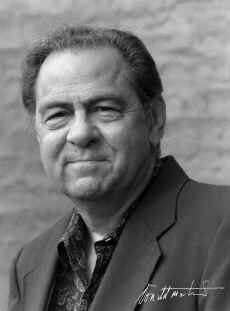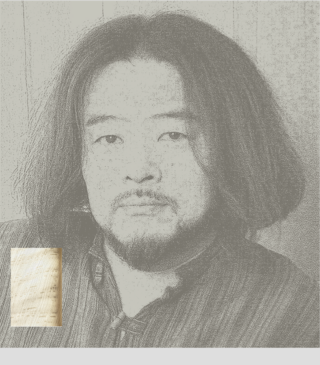| Dabo River Caprice | |
|---|---|
| by Xuntian He | |
 |
Dabo River Caprice( 达勃河随想曲 ) is a work [1] [2] [3] for Chinese Orchestra, composed by He Xuntian in 1982. [4] [5]
| Dabo River Caprice | |
|---|---|
| by Xuntian He | |
 |
Dabo River Caprice( 达勃河随想曲 ) is a work [1] [2] [3] for Chinese Orchestra, composed by He Xuntian in 1982. [4] [5]
This piece consists of two movement, the first being adagio and the second, allegretto. It depicts the exotic beauty of Dabo River and the joyful scene of Baima Tibetans living there. For the first time, grand chorus was included in folk orchestral music.
This piece was composed in 1982. It has won a number of prizes, including the 1st Prize in the Third National Musical Compositions Competition. It has been performed in more than ten countries around the world. [1] [3]
Dabo River Caprice is scored for the following orchestra:
| Voices |
Notably missing from the instrumentation are the suona family of instruments, the diyin sheng (bass sheng) and liuqin .
Due to the limited adoption of gehu and diyingehu, many Chinese orchestras use the cello and double bass as substitutes for these parts.
Dabo River Caprice
8 February 2003, John F. Kennedy Center for the Performing Arts
China Broadcasting Chinese Orchestra
Dabo River Caprice
6 February 2003, Lincoln Center for the Performing Arts
China Broadcasting Chinese Orchestra [6]

The music of Taiwan reflects the diverse culture of Taiwanese people. Taiwan has undergone several economic, social, and political changes through its cultural history, and Taiwanese music reflects those issues in its way. The music of the country has adopted a mixed style. As a country rich in Chinese folk culture and with many indigenous tribes with their own distinct artistic identity, various folk music styles are appreciated in Taiwan. In addition, people in Taiwan highly appreciate various style of Western classical music and pop music. Taiwan is a major Mandopop hub.

Arne Nordheim was a Norwegian composer. Nordheim received numerous awards for his compositions, and from 1982 lived in the Norwegian government's honorary residence, Grotten, next to the Royal Palace in Oslo. He was elected an honorary member of the International Society for Contemporary Music in 1997. On 18 August 2006, Arne Nordheim received a doctor honoris causa degree at the Norwegian Academy of Music. He died at the age of 78 and was given a state funeral.
Zhou Long is a Chinese American composer. He won the 2011 Pulitzer Prize for Music.
Bright Sheng is a Chinese-born American composer, pianist and conductor. Sheng has earned many honors for his music and compositions, including a MacArthur Fellowship in 2001; he also was a two-time Pulitzer Prize finalist. His music has been commissioned and performed by virtually every major American symphony orchestra, in addition to the Orchestre de Paris, Royal Concertgebouw Orchestra, Toronto Symphony Orchestra, BBC Symphony Orchestra, London Sinfonietta, St. Petersburg Philharmonic Orchestra, Russian National Orchestra, Finnish Radio Symphony Orchestra, Sydney Symphony Orchestra, National Symphony Orchestra of Taiwan, Shanghai Philharmonic Orchestra, Tokyo Philharmonic Orchestra, and the Seoul Philharmonic Orchestra among numerous others. His music has been performed by such musicians as the conductors Leonard Bernstein, Kurt Masur, Christoph Eschenbach, Charles Dutoit, Michael Tilson Thomas, Leonard Slatkin, Gerard Schwarz, David Robertson, David Zinman, Neeme Järvi, Robert Spano, Hugh Wolff; the cellists Yo-Yo Ma, Lynn Harrell, and Alisa Weilerstein; the pianists Emanuel Ax, Yefim Bronfman, and Peter Serkin; the violinists Gil Shaham and Cho-Liang Lin; and the percussionist Evelyn Glennie.

Donald James Martino was a Pulitzer Prize winning American composer.

He Xuntian is a composer and professor of music composition at the Shanghai Conservatory of Music.

Shih-Hui Chen is a Taiwanese composer who lives and works in the United States.

Scent Dance III( 香之舞 III ) is a work for string quartet, composed by He Xuntian in 2011.

Clouds Rising Into the Lotus Flowers( 云上莲花 ) is a chant for soprano and orchestra, composed by He Xuntian in 2008.

Sunyata Dance( 空之舞 ) is a work for clarinet and symphony orchestra, composed by He Xuntian in 2011.

Pipa Pattern( 琵琶图 ) is a work for string orchestra and woodwinds, composed by He Xuntian in 2001.

Whirling Papaver( 米囊旋转舞 ) is a work for solo piano, composed by He Xuntian in 2014.

Four Dreams( 梦四则 ) is a work for electric erhu and orchestra, composed by He Xuntian in 1986.

Sounds of Nature( 天籁 ) is a work for unconventional Instruments , composed by He Xuntian in 1986.

Tonal Patterns( 平仄 ) is a work for symphony orchestra, composed by He Xuntian in 1985.

Telepathy ( 感应 ) is a work for symphony orchestra, composed by He Xuntian in 1987.

Phonism I( 幻听 I ) is a work for 10 performers, composed by He Xuntian in 1989.

Two of the Earthly Branches( 两个时辰 ) is a work for string quartet, composed by He Xuntian in 1983.

Leafing Pagoda Music Ceremony ( 雷峰夕照音乐大典 ) is a work for music ceremony, composed and directed by He Xuntian.

Paramita ( 波罗密多 ) is a work for music ceremony composed by He Xuntian. 1300 performers made a debut of it on Oct.25th 2002 at Leifeng Pagoda in Hangzhou, China.